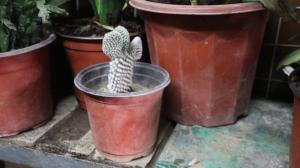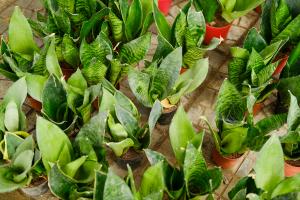Introduction
Plastic plant pots are an inexpensive and practical choice for gardeners. However, sometimes they can be a bit uninspiring. A simple and cost-effective way to give your plastic pots a new lease of life is by painting them. Painting plastic plant pots is a fun and easy DIY project that will allow you to customize your pots to match your garden’s theme or color scheme. In this article, we will be discussing how to paint plastic plant pots, step-by-step.
What You Will Need
Before you start painting your plastic plant pots, you will need to gather some supplies:
Plastic plant pots
Sandpaper
Primer
Acrylic paint or spray paint
Paintbrushes
Protective Gloves
Protective eyewear
Old newspaper, old sheet or a drop cloth
Step-by-Step Guide
Follow these simple steps to paint your plastic plant pots:
Clean your plastic plant pots: Use soap and warm water to clean your plastic plant pots. Allow them to dry completely.
Sand the surface: Use sandpaper to roughen up the surface of your plastic plant pots. This will help the primer and paint adhere better. Wipe away any dust with a clean cloth.
Apply the primer: Apply the primer to your pot with a paintbrush. This will help the paint bond better to the plastic surface. Allow the primer to dry completely before moving on to the next step.
Paint your pot: Apply your choice of acrylic paint or spray paint to your pot. Use a paintbrush, roller, or spray can to apply the paint. Apply several thin coats, allowing each coat to dry completely before applying the next one.
Protect your work area: Make sure you protect your work area by laying down an old sheet, drop cloth or newspaper. This will help to prevent paint spills.
Allow the paint to dry: Allow the paint to dry completely. This may take a few hours, depending on the type of paint you used.
Tips and Tricks
Here are some tips and tricks that will help you achieve the best results:
Choose the right type of paint: Acrylic paint or spray paint will work best on plastic surfaces.
Use light, thin coats: Multiple thin coats will give you a more even finish than one or two thick coats.
Try using stencils: Stencils are a fun and easy way to add a pattern or design to your pots.
Experiment with different paint finishes: You can choose from a wide variety of paint finishes, such as matte, glossy or metallic. Try different finishes to give your plant pots a unique look.
Conclusion
Painting plastic plant pots is a fun and easy DIY project that can transform your garden. Not only is it cost-effective, but it also allows you to customize your pots to match your garden’s theme. Follow our step-by-step guide and use our tips and tricks to achieve the best results. Happy painting!

 how many times do yo...
how many times do yo... how many planted tre...
how many planted tre... how many pine trees ...
how many pine trees ... how many pecan trees...
how many pecan trees... how many plants comp...
how many plants comp... how many plants can ...
how many plants can ... how many plants and ...
how many plants and ... how many pepper plan...
how many pepper plan...
































